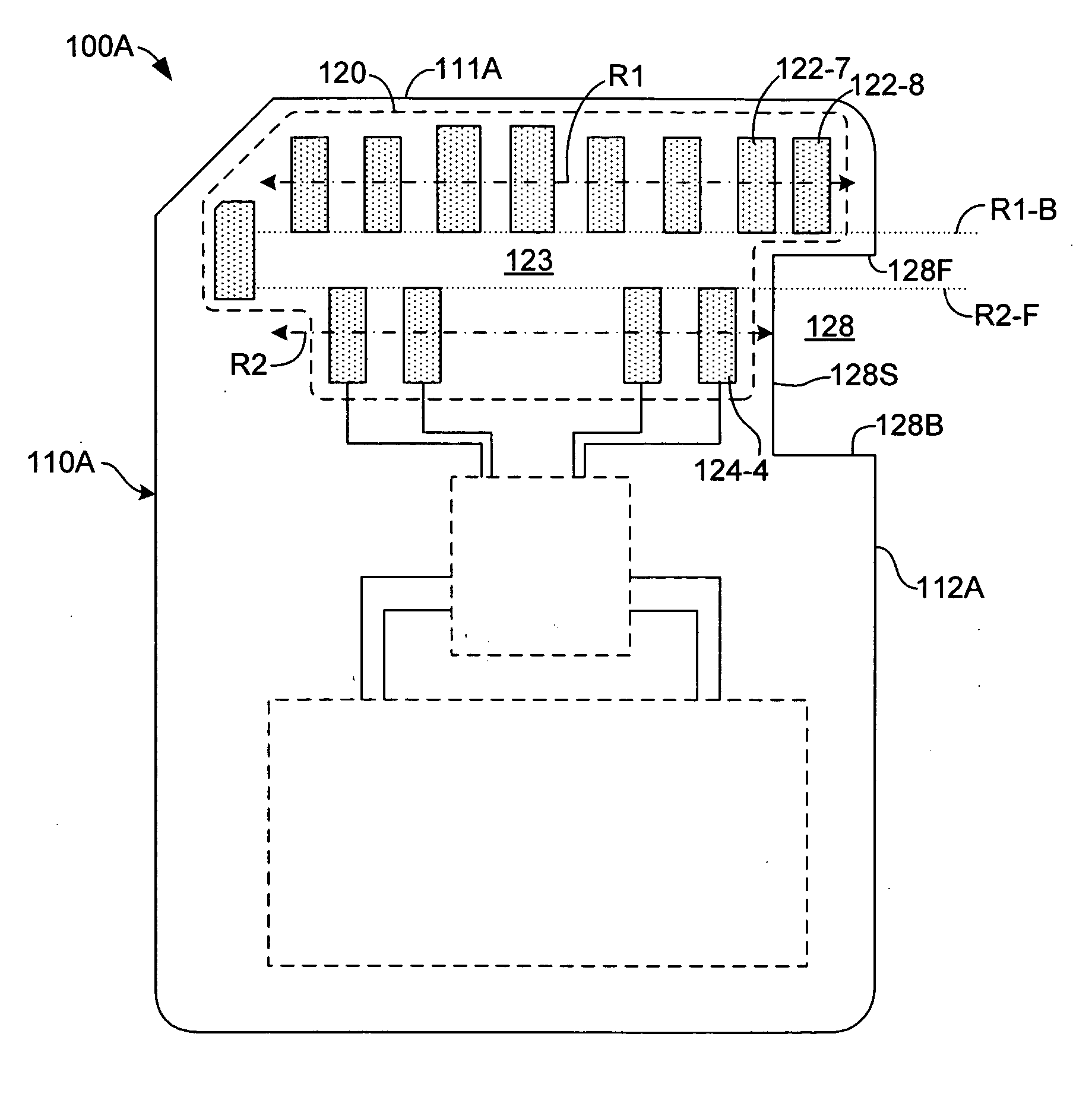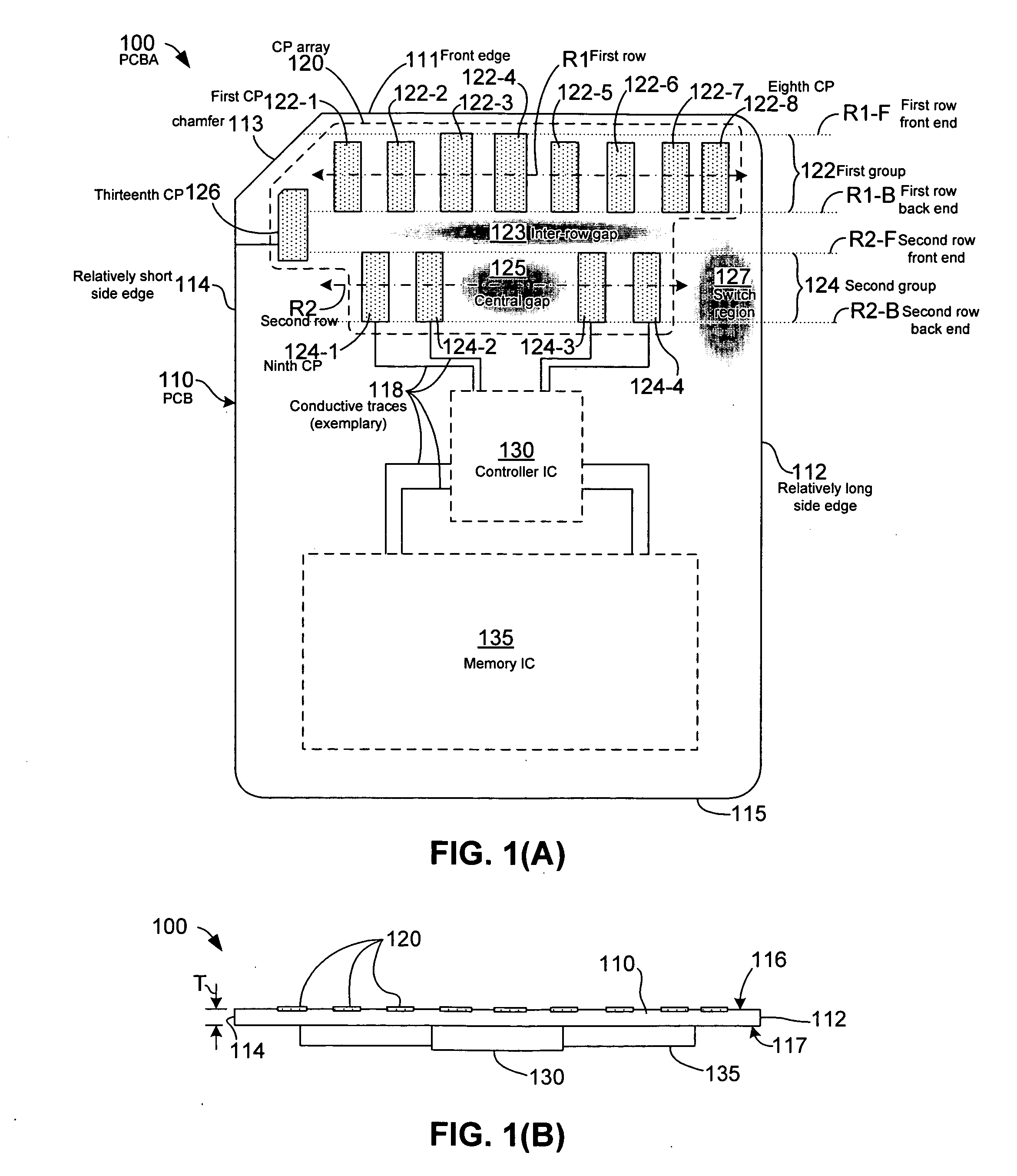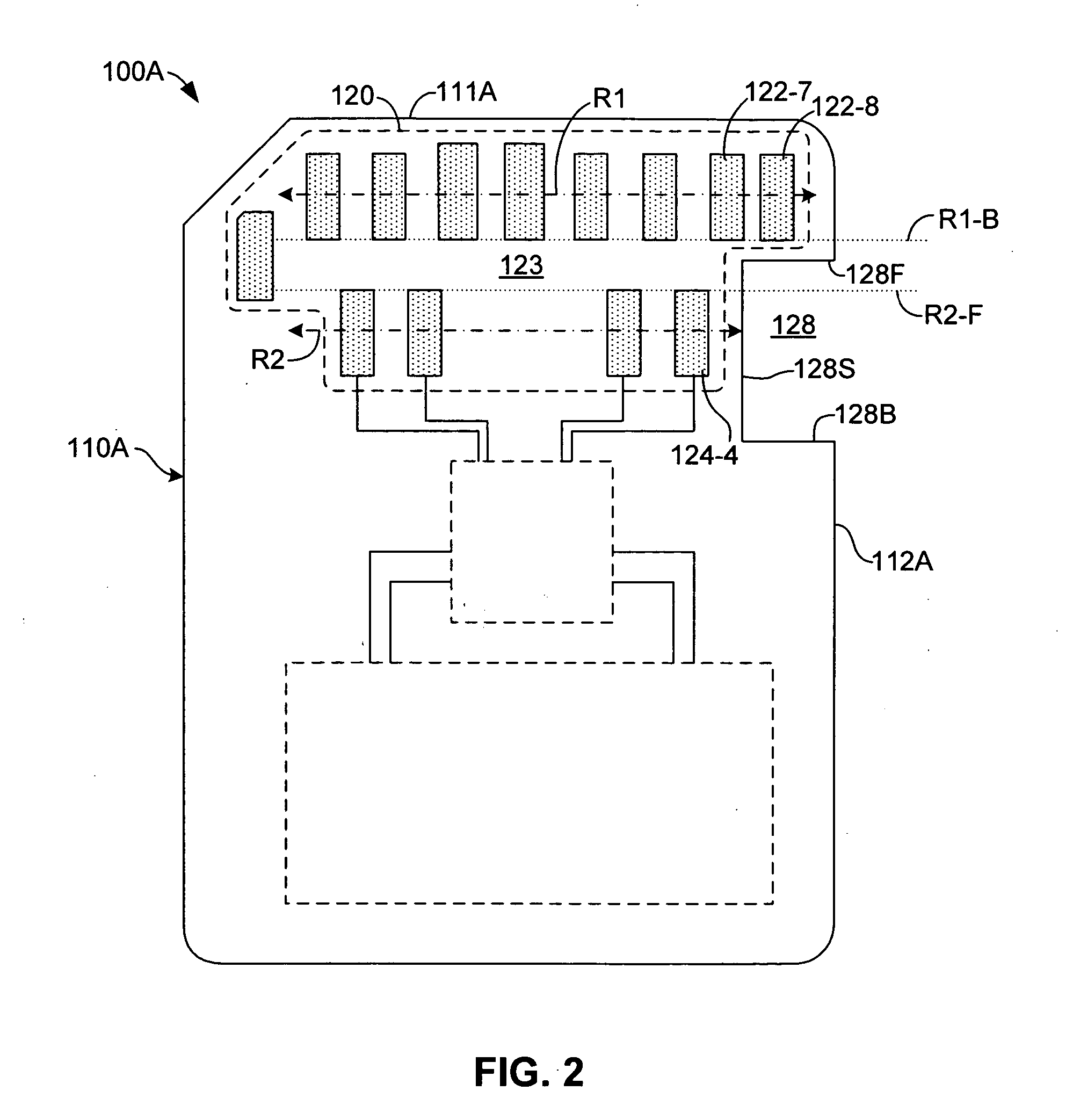Contact pad arrangement for integrated SD/MMC system
a contact pad and integrated technology, applied in the direction of printed circuit aspects, electrical apparatus construction details, electrical apparatus casings/cabinets/drawers, etc., can solve the problems of sd cards, inability to fit in mmc slots, etc., to facilitate the fabrication of memory cards and facilitate the accurate positioning of contact pads during assembly and use.
- Summary
- Abstract
- Description
- Claims
- Application Information
AI Technical Summary
Benefits of technology
Problems solved by technology
Method used
Image
Examples
Embodiment Construction
[0028] FIGS. 1(A) and 1(B) are top plan and end elevation views showing a printed circuit board assembly (PCBA) 100 for a 13-pad memory card according to an embodiment of the present invention. PCBA 100 generally includes a printed circuit board (PCB) 110 having a contact pad array 120 mounted on a first (e.g., upper) surface thereof, and one or more integrated circuits (ICs) 130 and 135 mounted on a second (e.g., lower) surface thereof. PCB 110 is formed in accordance with known PCB manufacturing techniques such that the contact pads of array 120 and ICs 130 and 135 (as well as other circuit components, which are omitted for brevity) are electrically interconnected by a predefined network of conductive traces 118 (only a few of which are shown for illustrative purposes).
[0029] PCB 110 is a substantially rectangular, flat substrate including multiple layers of conductive traces 118 and other conducting structures sandwiched between multiple layers of an insulating material (e.g., F...
PUM
 Login to View More
Login to View More Abstract
Description
Claims
Application Information
 Login to View More
Login to View More - R&D
- Intellectual Property
- Life Sciences
- Materials
- Tech Scout
- Unparalleled Data Quality
- Higher Quality Content
- 60% Fewer Hallucinations
Browse by: Latest US Patents, China's latest patents, Technical Efficacy Thesaurus, Application Domain, Technology Topic, Popular Technical Reports.
© 2025 PatSnap. All rights reserved.Legal|Privacy policy|Modern Slavery Act Transparency Statement|Sitemap|About US| Contact US: help@patsnap.com



